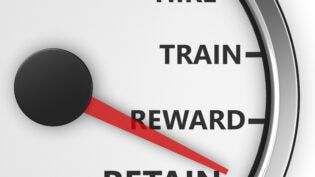9 Steps to Improve Employee Performance and Efficiency
By: Jenna Cyprus

Employers can improve their bottom line by getting more out of their current workforce. It isn’t necessarily accomplished by increasing work hours; these days, workers often spend more than 40 hours per week on the job, whether in the office or at home. So how can managers and leaders boost employee performance while saving time?
Here are some great ideas to do just that.
Delegate
Hey, we get it–your company is your brainchild, and you want to have a direct impact on everything that happens there. There’s nothing wrong with focusing on quality, but poring over every little detail yourself rather than delegating the job to managers wastes time.
Instead, give responsibilities to qualified managers and trust they can handle the job. This gives your workers the chance to build skills and leadership experience that will benefit your firm. You hired them, now let them contribute to your company by handling mission-critical tasks.
Match Worker Skills To Tasks
Knowing the skills of your employees and their work styles is vital to increase efficiency and performance. For instance, a creative and extroverted employee is probably an excellent choice to pitch ideas to potential clients. But they could have difficulty if they are given a task with a lot of rules and details.
Asking your workers to be great at all tasks is unrealistic and unproductive. Instead, before you give an employee the task, find out if that person is ideal for that task. If not, find another worker who is better suited to the job.
Focus on Communication
All good managers know that strong communication is key to maximizing productivity. Technology lets us connect with just a click, so communication is efficient, right? Not always. A recent study by McKinsey determined that emails can take almost 30% of a worker’s time. Email was the second most time-consuming task for employees.
Instead of relying on email, try using social networking channels, such as Slack, that allow for fast and efficient team communication. You also can ask your workers to touch base the old fashioned way – by communicating by phone or in person. Having a brief meeting or call can settle a problem that could take hours of emailing.
Make Goals Clear
Don’t expect workers to be highly efficient if you don’t give them a concrete goal to reach for. If plans are not defined and achievable, employees will not be as productive. So, make sure your workers’ assignments are narrow and precise. Tell them exactly what you expect and the impact this project will have on the company.
One way to make sure this happens is for your goals to be SMART. That is, they are specific, measurable, attainable, realistic, and timely. Before you give a task to a worker, ask yourself if it is SMART. If it isn’t, figure out how to tweak the mission to help your employee stay efficient and focused.
Provide Incentives
An effective way to encourage workers to be more efficient is to give them rewards for being efficient. Recognize your workers with employee awards for efficiency and getting projects done on time and within budget. Other incentives you can try include:
- Paid time off: Rather than a raise, give efficient employees more paid time off.
- Take them out to lunch: Take the project team out to lunch, or try a happy hour or a dinner. Also, try letting them leave early on Fridays.
- Give a handwritten note: Providing a handwritten note shows that you appreciate the hard work your employees have done, and you care enough to take the time to thank them personally.
- Lazy Monday card: Permit productive employees to arrive one or two hours late on Mondays.
- Tell your supervisor: If you email a team member commending her for her hard work, CC your boss on the email.
Cut Out the Chaff
If you can, try not to give your workers small, unnecessary tasks focused on a significant project. Look at the routine of the project team. See if anything can be cut to provide them with more time to focus on the most critical assignments.
For example, if workers are supposed to write daily progress reports for their bosses and there is no time to read them, think about cutting the word count from 300 words to 100 words. Eliminating a formality that no one is paying attention to gives your team members more time to accomplish big goals.
Train Employees
Getting rid of training could seem like an effective way to save time and money. However, this can backfire. Forcing workers to learn their jobs on the job can be incredibly inefficient.
Instead of having employees try to finish a task without training or guidance, take a day to teach them the skills they need to do a good job. This way, they can accomplish tasks independently and not have to waste your time later correcting mistakes.
Also, encourage employee development. Help them grow their skillsets because it will create a more advanced workforce that will benefit your company.
You can support employee development through one-on-one coaching, courses, workshops, seminars, mentoring, or just giving them more responsibilities.
Encourage Feedback
You cannot boost employee efficiency if they don’t know they’re inefficient. That’s why performance reviews are so critical. Measure each worker’s performance, hold one-on-one meetings to tell them what they are doing well, and share areas for improvement.
Think About The Big Picture
Things that you might think a waste of time today can benefit you down the road. So before you identify possible misuse of time, ask if it could help the company.
For example, buying HR software can save your company hundreds of hours in the coming years. Good HR software that allows for automated onboarding and payroll that runs itself might seem like a lot of time and money to invest now, but it will pay off big in the future.
1882 Views












